Highlights
NATIONAL TREE LIGHTING
On December 5, 2019 during our 80th Anniversary Season, the Touring Chorus and Young Men’s Ensemble performed at the White House for the National Tree Lighting. We were invited back for 2020!
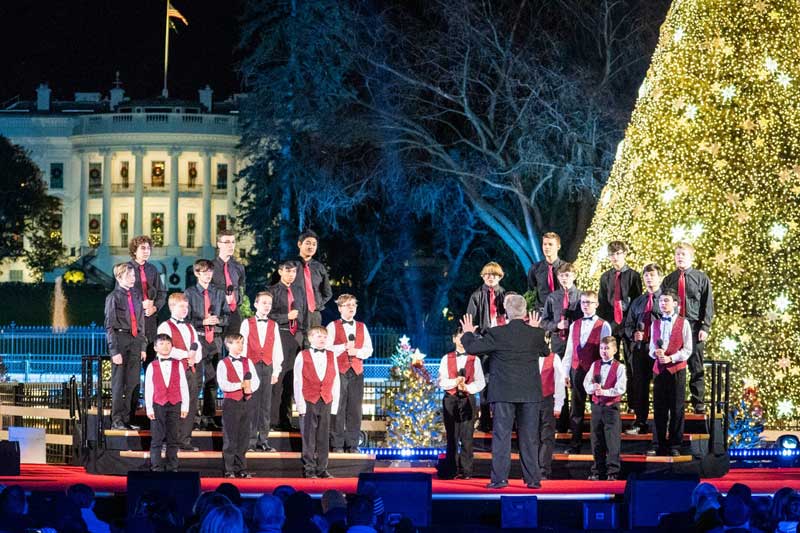
TUCSON ARIZONA BOYS CHORUS PROFESSIONAL COLLABORATIONS 2017 – 2018
Arizona Opera – Tosca
Puccini
November 2017
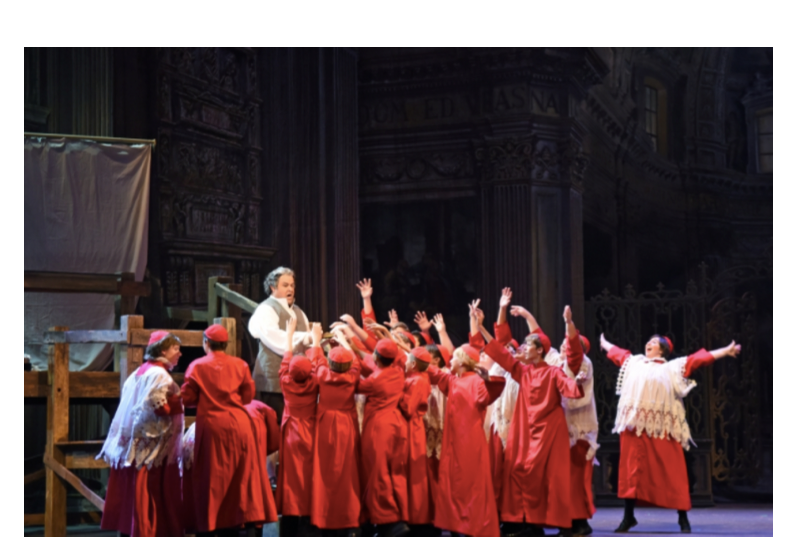
Every four or five years almost since it was launched in Tucson in 1971, Arizona Opera has performed Puccini’s popular Italian melodrama “Tosca,” and Joseph Specter has an idea why: There’s just something about Puccini that is irresistible.
“Puccini and this work are always such a powerful combination of engaging people in opera,” said the Arizona Opera general director, who confessed the piece, which opens at Tucson Music Hall Saturday, Nov. 11, is one of his personal favorites.
“As a former baritone, I always dreamed of playing (Baron) Scarpia,” said Specter, who had an eight-year professional singing career before turning to the management side of the art form. “I think that’s why ‘Tosca’ might be my favorite.”
We asked Specter to give us three things we should look for in Arizona Opera’s production of “Tosca,” which will have two Tucson performances this weekend before moving on to Phoenix next week.
- Power of the human voice: “The first thing to look for is the voice itself. We have these casts of magnificent artists who have these incredibly expressive instruments that are really going to bring this masterpiece to life. … I think Puccini’s music leads in this piece.”
- The cast: “I think we have an exciting mix of artists, some of whom are well known to local audiences and some who are brand new. I would be remiss if I didn’t mention (baritone) Gordon Hawkins playing the villain Scarpia. He’s a magnificent singer who has put his stamp on these big, villainous roles. He has an international reputation with an Arizona connection; he lives in Phoenix.”
- The acting: “Singing actors today who are in this art form are more than just a voice. For opera singers to be successful in the 21st century usually means their talents go well beyond the voice itself … to create a really dramatic performance.”
November 2017, Arizona Daily Star
Tucson Symphony Orchestra – Symphony No.3 “Kaddish”
Leonard Bernstein
January 2018
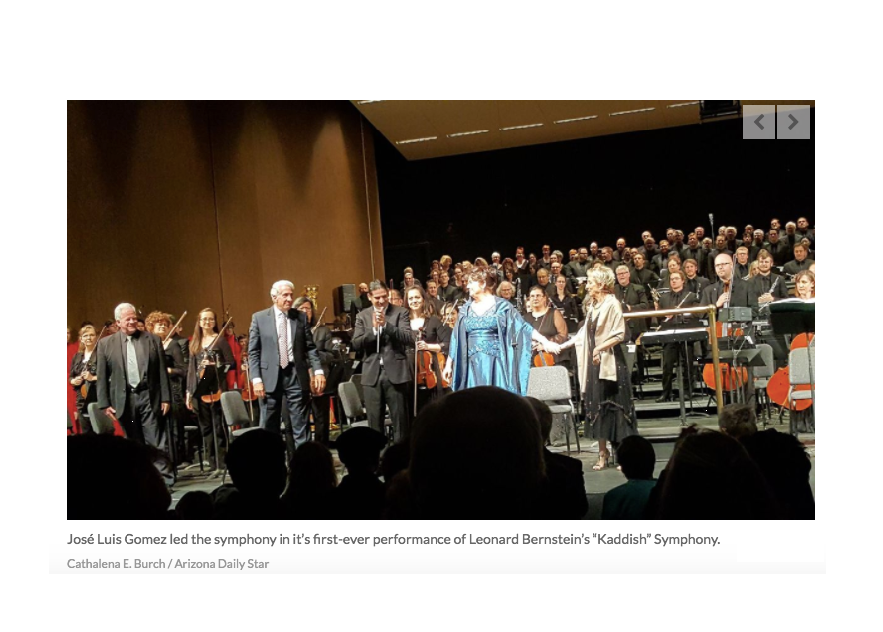
The Tucson Music Hall stage could have used a foot — or 10 — more Friday night. There was little wiggle room left when the musical contingent necessary to pull off Bernstein’s Symphony No. 3 “Kaddish” filled the stage. More than 75 TSO Choristers were set up on risers lining the back wall, pressed against the percussion section. At one point in the third movement, a percussionist had to shimmy along the small space separating the two sections to get to his instrument. A couple dozen boys from the Tucson Arizona Boys Chorus sat on the floor against the piano-side wall while they waited for their big moment late in the performance. The orchestra, which included nearly 30 people playing woodwinds and brass, a harpist and a full force of string players, filled in the rest of the stage. This left a sliver of real estate for soprano soloist Kelley Nassief and narrator Jamie Bernstein.
It is easy to see why the TSO, in its 89-year history, waited for an occasion such as this — the sixth annual Tucson Desert Song Festival, dedicated to the 100th anniversary of Bernstein’s birth — to mount such a manpower demanding work. From the rush of applause Friday night, it was worth the wait. 1/22/2018 Worth the wait: TSO’s performance of Bernstein’s ‘Kaddish’ is terrific | Music | tucson.com http://tucson.com/entertainment/music/worth-the-wait-tso-s-performance-of-bernstein-s-kaddish/article Bernstein, who died in 1990 at age 72, built the “Kaddish” around Jewish prayers for the dead. It is dramatic music theater in all its glory, with moments of crushing grief brought to life in quivering string passages and rumbling percussion that at times sounded like a thunderstorm swelling in the distance. José Luis Gomez, the music director of TSO, did an impressive job of keeping everyone on the stage on the same page, and never let the rumble roar so loudly that it drowned out the sweetness of the strings. There were a few moments when it was hard to hear Bernstein, the composer’s oldest daughter, but they were fleeting. One was due to a momentary silent mic; another time Bernstein had to speak up to better project over the strings that were literally feet away. Bernstein narrated texts that she had written to substitute for her father’s original words. Her father alternately praised God and took him to task for the mess of the world; his daughter turned the spotlight on her father, hashing out the composer’s inner battle with God and his own gift from God, his music.
The great majority in Friday’s audience of 1,400 may have watched Bernstein when he was a superstar New York Philharmonic conductor in the 1960s and his “Young People’s Concerts’” were broadcast on CBS, but there were some of us who knew Bernstein only by reputation and pop culture references. So seeing his daughter on stage to connect the dots was pretty exciting. It was also exciting to hear Nassief hit the high end of her soprano range with such control and clarity. The TSO Chorus and the boys chorus were pretty terrific singing in Hebrew with impressive enunciation. Also on the program: Beethoven’s Overture to “Fidelio” and Gustav Mahler’s unfinished Symphony No. 10, which the TSO, with the stage lit up by music-stand lights that almost mimicked flickering candles, performed with great emotion, warmth and nuance. Gomez did a fine job of bringing out Mahler’s cinematic flourishes and balancing it with the emotional depth of the piece, which Mahler dedicated to his cheating wife. The TSO’s “Kaddish” performance kicked off the first weekend of the Tucson Desert Song Festival’s “Bernstein At 100,” which runs through Feb. 4 and surveys all manner of the late composer’s catalogue, from his orchestral and Broadway works to his operetta “Candide,” which Arizona Opera will present at the Music Hall next weekend.
January 2018, Arizona Daily Star
True Concord pulls off its biggest concert with Bernstein’s Mass
- Cathalena E. Burch Arizona Daily Star
- Jan 27, 2018 Updated Jan 28, 2018
From the outset, Friday night’s True Concord Voices & Orchestra concert looked like your typical big-chorus event.
Two-dozen adult choristers in black robes sharing the risers on one side of the Centennial Hall stage with an equal number of Tucson Arizona Boys Chorus vocalists dressed in red.
The orchestra numbering two dozen was set up on the other side of the stage.The red-carpeted ramp separating the chorus and orchestra was an interesting twist.
And the chair at the conductor’s podium was a first; in the 14 years Eric Holtan has led his professional choir, we’ve never seen him sit through a performance.
When the Centennial Hall house lights dimmed, the voices ignited — a solitary and stirling soprano joined by a warm and commanding baritone singing the Kyrie Eleison — and the choirs joined in and then the dancers came on stage and Grammy-nominated world-class baritone Jubilant Sykesappeared singing the uplifting Broadway-style ode “A Simple Song,” and you had a feeling Holtan wouldn’t be using that chair much.
The performance kicked off the second weekend of the Tucson Desert Song Festival “Bernstein At 100.” It repeats at 3 p.m. Sunday at Centennial Hall, 1020 E. University Blvd. on the University of Arizona campus.
Bernstein’s Mass is not a Mass in the traditional Mozart or Verdi style, where the focus is squarely on the choir and soloists. This is Bernstein, after all, a man with a flair for the dramatic and theatric. His Mass is a theater piece in all its glory, with beautiful young UA School of Dance students gloriously prancing about to wonderful choreography by the husband-and-wife team of Christopher Bryan Compton and Tamara Dyke-Compton; impressive voices from both choirs; soloists — RC Troike from the Boys Chorus, baritone Tamar Green, soprano Katherine Weber and tenor Aaron Finley — who brought not only terrific vocals to the stage but some serious acting chops; and a chamber orchestra that easily slipped genres from classical to jazz and pop with shades of beebop. At one jazzy point early on, as RC was singing this high-pitched prayer, his fellow Boys Chorus singers chimed in with kazoos.
Sykes, who was nominated for a Grammy for his role as the celebrant, was impressive, not only because he has an amazing warm and nuanced voice that goes from the soulful low end of his range to a middle spot where pop and classical music come together, but because he inhabits the role. He is the celebrant, the man of God who is struggling mightily with his doubts and the arduous task of keeping his congregation in the faith. You could feel his frustration and despair as he fell to the floor in a crumpled mess of angst and frustration as his congregants (the dancers) fell further from faith. That was perhaps best expressed by the seductive dance between a guy in white — representing purity — and a girl in red — representing temptation.
The pair’s dance was a theme throughout the piece, until Sykes reached his breaking point in the explosive “Things Get Broken.” In a fit of palpable frustration, he poured the wine on the floor, smashed the glass and then, with a look of desperation and sheer madness, he convinced us he was a man truly struggling to find himself again. It was brilliant.
Sykes was joined by a stage full of standout performances including UA dancer Keenan Schember in the role of God’s Fool; RC, who elicited more than a few oohs and ahhs among the audience of 1,100; the adult and the boys choirs, who nailed all sides of the Bernstein, from the classical that’s in their wheelhouse to the jazzy pop and all Bernstein’s theatrics including a chorus of finger-snapping and soloists whose moment to shine cast them as actors. The three soloists, including Greene who had such wonderful colors to his velvet baritone, were terrific, as were the student dancers, who brought the Comptons’ choreography to brilliant, dramatic life.
As for that chair at the podium: Holtan sat in it briefly during one of Sykes’s a capella solo turns.
Holtan arguably had the biggest role Friday night keeping all of the moving parts connected. From the outside looking in, it seemed daunting keeping track of the dancers entering and exiting, cuing the choirs and keeping the orchestra on page with the soloists. But Holtan performed with near flawless timing in a concert that no doubt will go down as one of the highlights of the Song Festival’s “Bernstein At 100.”
January 2018, Arizona Daily Star
Young composer comes home to make TSO history
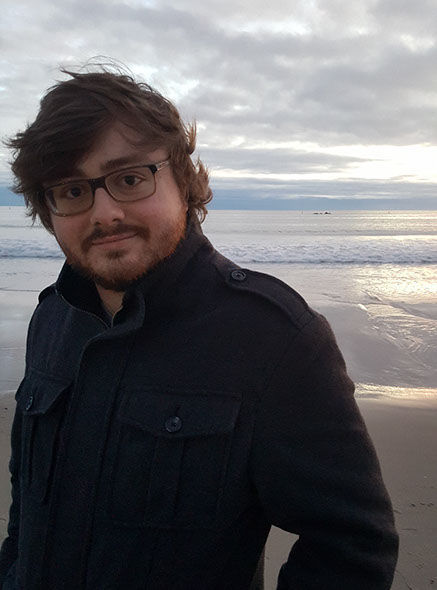
Anthony Constantino is the first alumnus of the Young Composer Project to be commissioned by the TSO to write a piece. Conductor José Luis Gomez calls the program “not only our-best kept secret, but our identity.”
Courtesy of Anthony Constantino
It’s hard to imagine, but in the 25 years since the Tucson Symphony Orchestra started its Young Composers Project, it has never commissioned an alumnus to write a new work.
Until now.
Last year, the orchestra, to celebrate the inaugural season of its new conductor José Luis Gomez, commissioned a YCP alumnus to compose a special work for this weekend’s Classics concert. Anthony Constantino, class of 2012, is the first of many composing project alumni whose works will be presented by the orchestra, Gomez said this week as he unveiled the orchestra’s 2018-19 season.
The orchestra will bring back a young artist — cellist Nicholas Mariscal — and a composer — Sarah Olivo — next season, the orchestra’s 90th.
“We need to showcase this as not only our best-kept secret but our identity,” Gomez said of the YCP program.
Gomez will be at the podium this weekend when the orchestra performs the world premiere of Constantino’s “Luminosity’s Witness” to open “Rachmaninoff Rhapsody,” a concert that also features the Tucson debut of Ukranian pianist Vadym Kholodenko, the 2013 Van Cliburn Gold Medalist.
“I certainly hope this performance will set a pattern for the Tucson Symphony to really start taking advantage of the wonderful talents they are creating with YCP,” said Constantino, 23, who graduated from University High School in 2012 and went on to earn his music degree from New York’s Manhattan School of Music. He is now studying for his master’s/Ph.D. at the University of California at Los Angeles.
We caught up with Constantino to talk about the composing opportunities he has had since he finished the TSO composers project and the thrill of writing a piece for his hometown orchestra.
“I’ve been very fortunate in that I’ve had a number of opportunities to write orchestral music in particular,” he said, including a 2015 commission that was performed by the Kennett Symphony Orchestra under the baton of longtime TSO guest conductor Michael Hall. He also contributed a work commissioned by Waldland Ensemble that for the group’s 2016 CD “American Voices.”
“That was an exciting opportunity. They took this program and performed it at a number of universities and they ended up at Weil Hall at Carnegie and did the real premier,” Constantino said. “That was a great opportunity.”
How the TSO commission came about: “It all mystifies me a little bit. When Mark Blakeman was the president, they asked me to come in and talk to them. They pitched a commission and they wanted it to be about Tucson. That was really where the idea started.”
When I think of Tucson, I think of nature: “I thought about it for quite a while and the first thing that came to mind for me was nature. So many people live in Tucson because of the nature scene nd how great it is. For me the first thing that came to mind is the great sunsets. My parents’ house is kind of on top of a hill and as a kid I would watch the sunsets. Having lived on the East Coast and West Coast, I have never seen sunsets like the ones we have in Tucson.”
Expressing the beauty in melody: “One of the main harmonic components in the piece is a progression from sunrise to sunset. It opens with desert music that feels like the desert with chords and harmonies representing the heat of the sun. A shaker is there coming back at certain intervals that symbolizes the finely ground sand gravel you find in Sabino Canyon. At the beginning of the piece, a lot of it sounds pointy and spiky, but as the piece progresses as we move into the sunset, the person on the hike gets lost in the sunset and the music really takes a big shift to something a lot more lush and beautiful while still using a lot of the same thematic material. As sunset fades and nighttime (descends), a cello quartet plays, little chords in the piano and vibraphones represent stars and little hushed noises of nature.”
On being the first YCP alumnus commissioned: “It’s an incredible honor to be the first and I know Maestro Gomez … is very excited to start doing this to start commissioning alumni more. I am extremely honored to be the first one and I really think that that was ‘the right time, right place’ thing.”
Arizona Daily Star
February 12, 2018
This article was published in the December 2017 edition of Tucson Lifestyles.
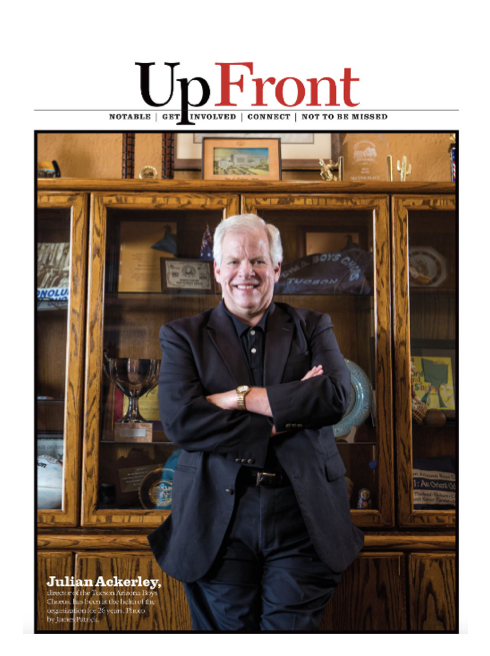
Chorus Values
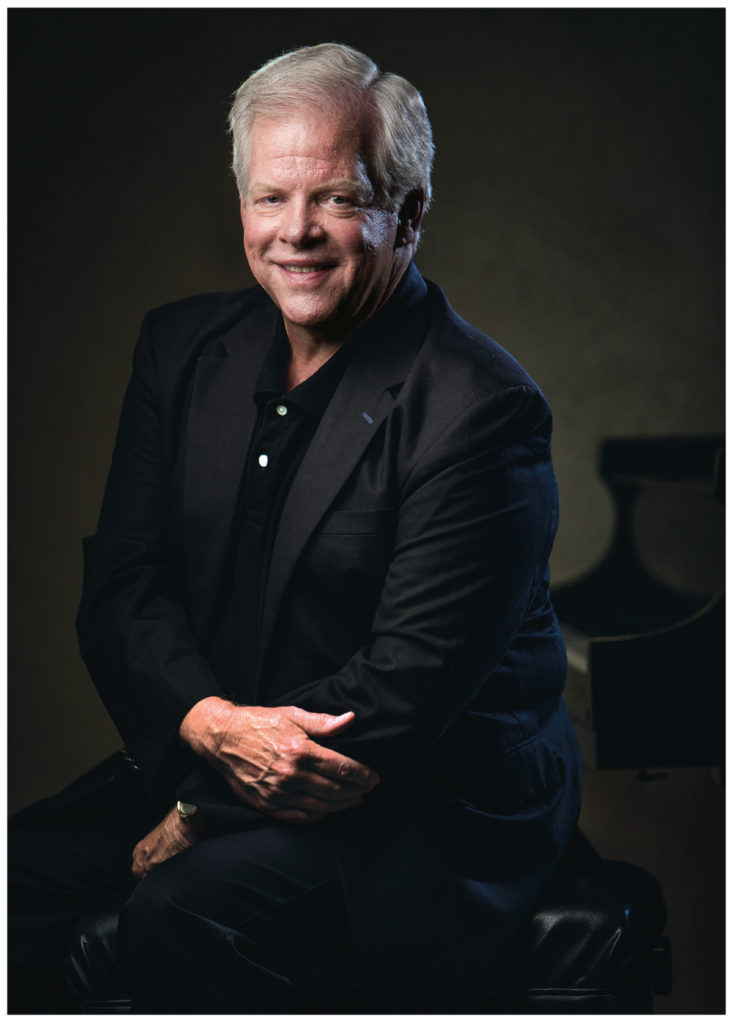
Chorus Values
Julian Ackerley is the director of the nonprofit Tucson Arizona Boys Chorus, and in his expansive office, books line the walls, including a set of volumes of the “Dictionary of Music.” Frames full of pins from places the chorus has traveled hang on one wall.
The Nebraska-born Ackerley never thought choral directing would be his lifelong career, but if you ask just about anyone, they’ll say Ackerley is well suited for it.
He certainly has the background. He said he remembered being “Mister Music Man” in first grade. In sixth grade, he started playing the piano, and in high school, sang in choir. The music played on in college, where Ackerley earned a bachelor’s and master’s in music education from the University of Arizona. A doctorate of musical arts followed in 1983.
You can see all that education and years of experience play out during a rehearsal session for the chorus. Twenty, 11- to 13-year-old boys — the touring group members of the chorus — stand in organized rows, expectantly waiting for Ackerley to give the cue to begin performing George M. Cohan’s 1906 standard, “You’re a Grand Old Flag.”
He raises his hand, and they’re off and singing. A swell of angelic, crystal-clear alto, soprano and second soprano voices fills the room, providing a surround-sound feel. As he stands in the front of the room, Ackerley patiently offers comments throughout the 90-minute rehearsal.
“Wow, your G was really in tune,” he comments approvingly. “Good for you!”
“What’s the most important part about singing?” he later asks the group.
“Listening,” the boys answer in unison.
Though he is the one directing the chorus, Ackerley relies on a talented team to support all the work that is necessary to produce the kind of first-class shows that TABC fans have long been accustomed to. For example, you may find Marie Sierra, one of the group’s two accompanists, sitting behind the piano during a rehearsal. The University of Miami graduate, who holds a bachelor’s and master’s in piano performance, is starting her 11th season with the Boys Chorus. Like Ackerley and his wife Jane, Sierra travels with the Touring Chorus.
“He’s a master at keeping the boys engaged and teaching them life lessons,” Sierra says about Ackerley. “He’s very efficient in rehearsal; we get a lot done. The boys are always engaged and on their toes.”
She notes that when she started working with Ackerley, she saw how the boys blossomed. She even enrolled her son, Nicholas Feldman, for a couple of years starting at age 10. Feldman is 19 now, but he picked up good habits while with the chorus.
“The boys learn how to be gentlemen; how to think of others first,” says Sierra, who also plays for high school choirs and teaches piano lessons. “They learn to lead by example.”
Since 1980, Ackerley has served as the ebullient director, mentor and overall driving force behind the chorus. The 63-year-old has been at the helm for 37 years — almost half of the organization’s tenure. In December 2019, TABC will turn 80.
The chorus performs at 35 to 50 events a year. Its headquarters, located on Pima Street just east of Craycroft Road, is where many of the practices take place. Depending on the group, choir practices range from one 45-minute session a week, to 90-minute sessions three times a week.
“My day gets complex, but when four o’clock comes, it’s such a pleasure to go into that rehearsal room and create art,” Ackerley enthuses.
About 100 boys make up the Tucson Boys Chorus, ranging in age from 6 to 21. The 6- to 8-year-olds are known as Cadets; boys in third to fifth grade are enrolled in Training Chorus; and fifth- and sixth-graders are known as Towne Singers. Ackerley describes the Towne Singers as the “JV team” to the Touring Chorus.
The Touring Chorus is the organization’s flagship group. The 22 members and three alternates perform for public and private events, as well as partner with the Tucson Symphony Orchestra and Arizona Opera for concerts. The Touring Chorus has performed worldwide, including China, Switzerland, France and Germany. Ackerley says the group will return to Mexico next spring and travel somewhere next summer.
About a year and a half ago, the Boys Chorus began partnering with school districts outside of Tucson proper. The successful program offers boys in outlying areas, namely Oro Valley, Vail and Sahuarita, closer locations in which to sing.
It costs $50 to $100 a month to be a member of the Tucson Arizona Boys Chorus, although no boy is turned away for financial reasons. Ackerley says 38 percent of the chorus receives some sort of scholarship.
Ask TABC board president Renee Shane-Boyd about Ackerley’s dedication to the program and his musicianship and she remarks, “There are very few people who have done what he has done. He has been able to sustain the energy and excitement of a program for such a long time and to do it in a way that makes it relative and permanent.”
She has an extensive music background herself, and would certainly know about running a large and complex program. She served as the band director for Catalina Foothills High School for 35 years, and has known Ackerley since her son joined the chorus in January 2010. She’s excited about the MIP — Membership Incentive Program — that started in January 2016 and includes monthly drawings for “fabulous prizes,” such as remote-controlled cars, a drone and gift cards to Dairy Queen.
But the chorus has a much greater goal than simply offering material incentives to sing. Above all else, TABC instills four main values in its members: honesty, integrity, reliability and respect. “I think that the core values we develop for young men are equally or probably more important than any note we sing,” explains Ackerley, who observes that the late, singing superstar John Denver was a member of the chorus. “We develop leadership skills that will be with them the rest of their lives. It’s an extraordinary opportunity for young people.” — Valerie Vinyard
